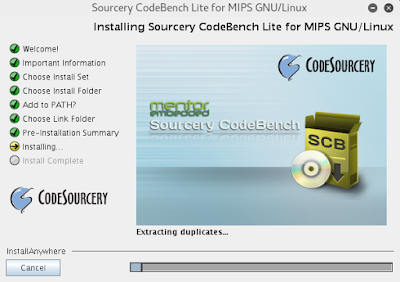Cross compilation for broadband routers II
Last
week, I wrote about cross
compilation for broadband routers
and the test result
wasn't as I
expected because my “Hello World” application
didn't work in
my router
but I have been working on it for
this week and I have got it. It works !!!
We have to take into account some things that we'll see in this post
today like the importance of bit order in memory, static and shared
libraries, kernel version, etc.
First,
we should check how the target processor saves words (bytes) in
memory because depending on this we will compile on one way or
another. There are two techniques, little-endian and big-endian, and
although I have checked
it, I still remember when I studied this at University. Most
routers work with MIPS processors and big-endian architecture,
storing the Most Significant Byte (MSB) at
the lowest memory address, while most PCs
and servers work with Intel and AMD processors, storing
the Least Significant Byte (LSB) at the lowest memory address.
Therefore, MSB, which is optimized for
networking task, is the opposite of LSB. Next
we can see the main difference between Little-Endian and Big-Endian:
 |
| Little-Endian vs Big-Endian |
Another
thing to take into account is the kernel version for compiling with
the right libraries. Last post I installed
the cross-development toolchain of the Universal
Embedded Operating System which is
right for new developments over new broadband routers but I want to
make a new application for an old router, thus I have used the
CodeSourcery
toolchain this time, but
I have downloaded an old one from 2012.
 |
| CodeSourcery Installation |
Also,
it is important to know about static and shared libraries. When
we develop for a MIPS environment where the target device has few
libraries and the file system is in
read-only mode, like most routers, is much
better to build applications with static libraries although it will
be bigger than applications with shared libraries. Next
we can see some linux commands (ldd, readelf and file) to check if an
application has shared or static libraries.
 |
| Check libraries of a binary |
Once
our development platform is ready with the CodeSourcery toolchain, we
can compile the “Hello World” application with Big-Endian, static
libraries and the right kernel and libraries versions.
 |
| Developing and Compiling Hello World |
Finally,
we have seen that the application is a MSB executable for 32 bits
MIPS microprocessor with static libraries and …. it works in my
Huawei router.
 |
| Application Hello World for MIPS Architecture |
Regards my
friends, we'll try to build more and sophisticated applications in
the future!!










Thanks, this just help me a lot.
RépondreSupprimer